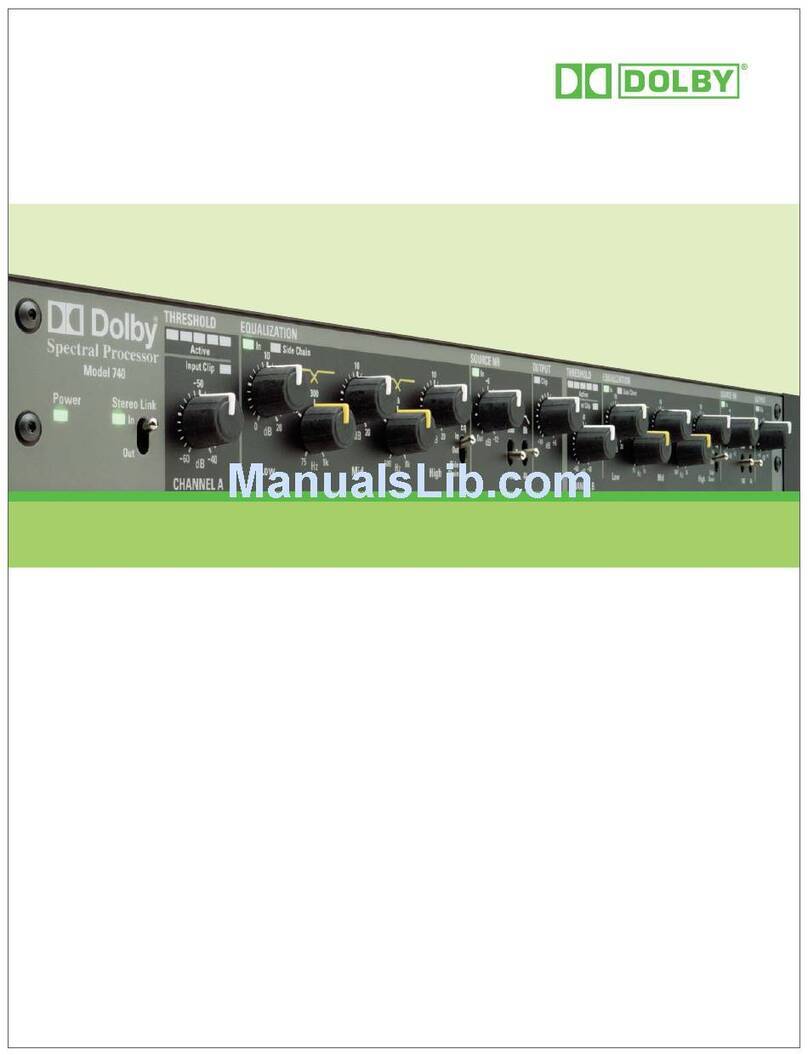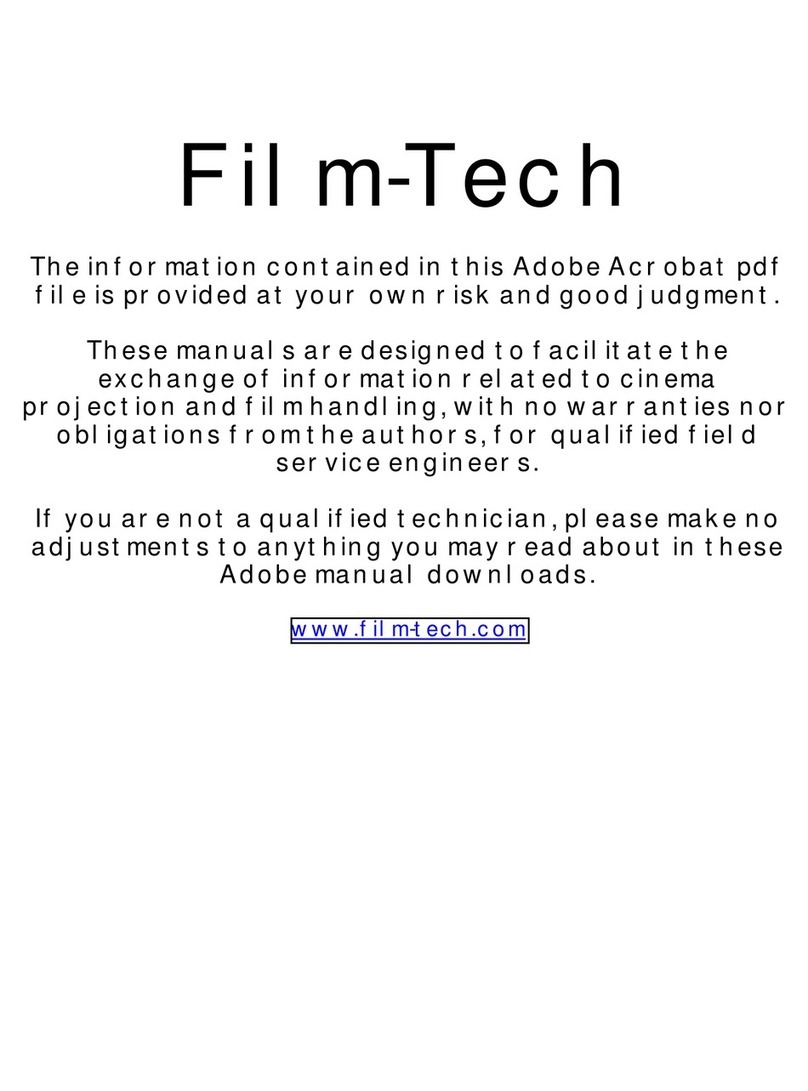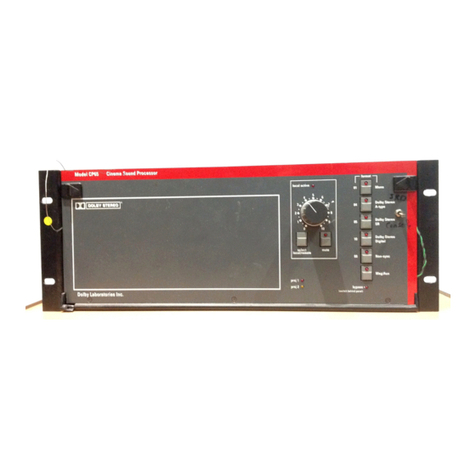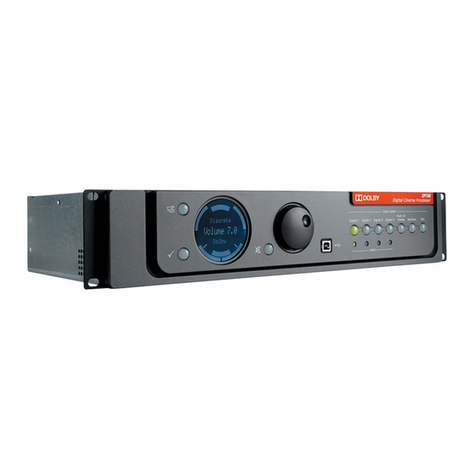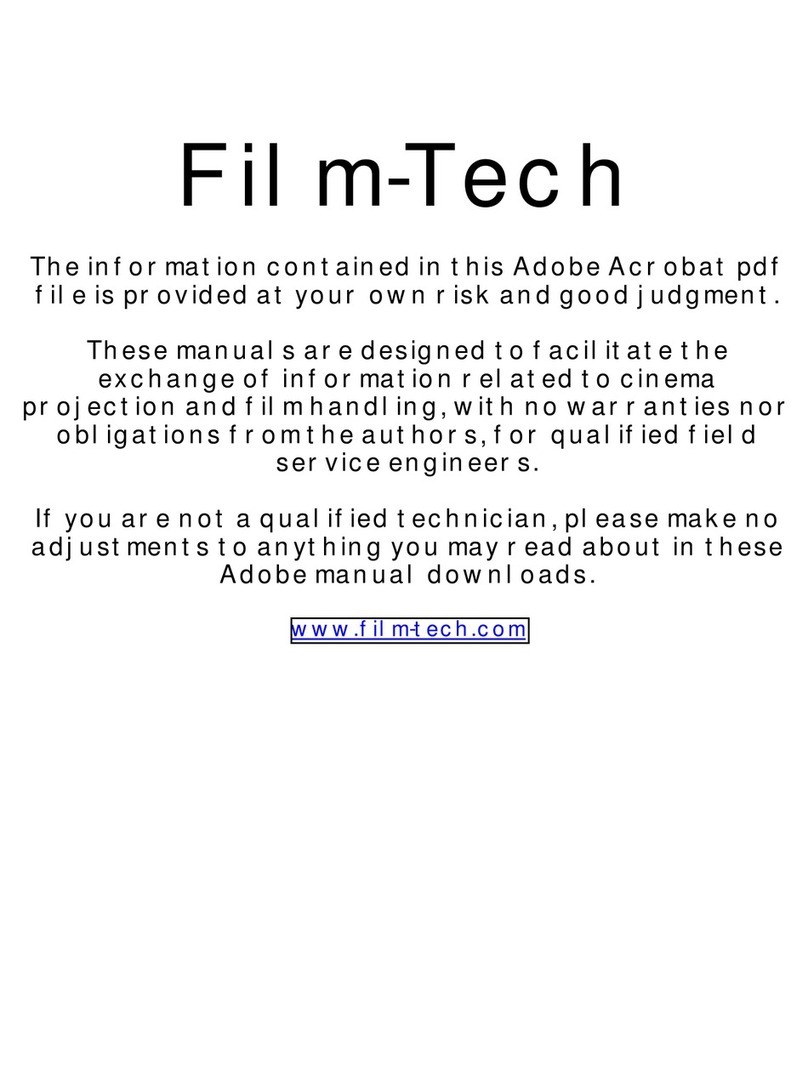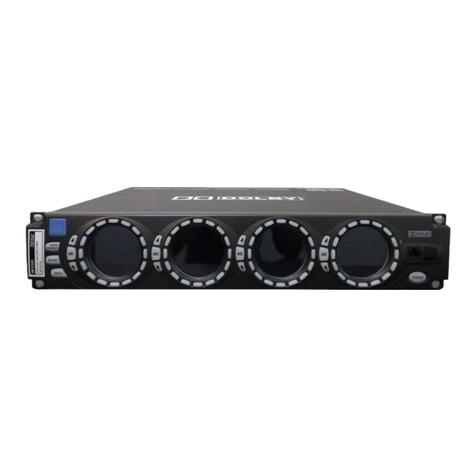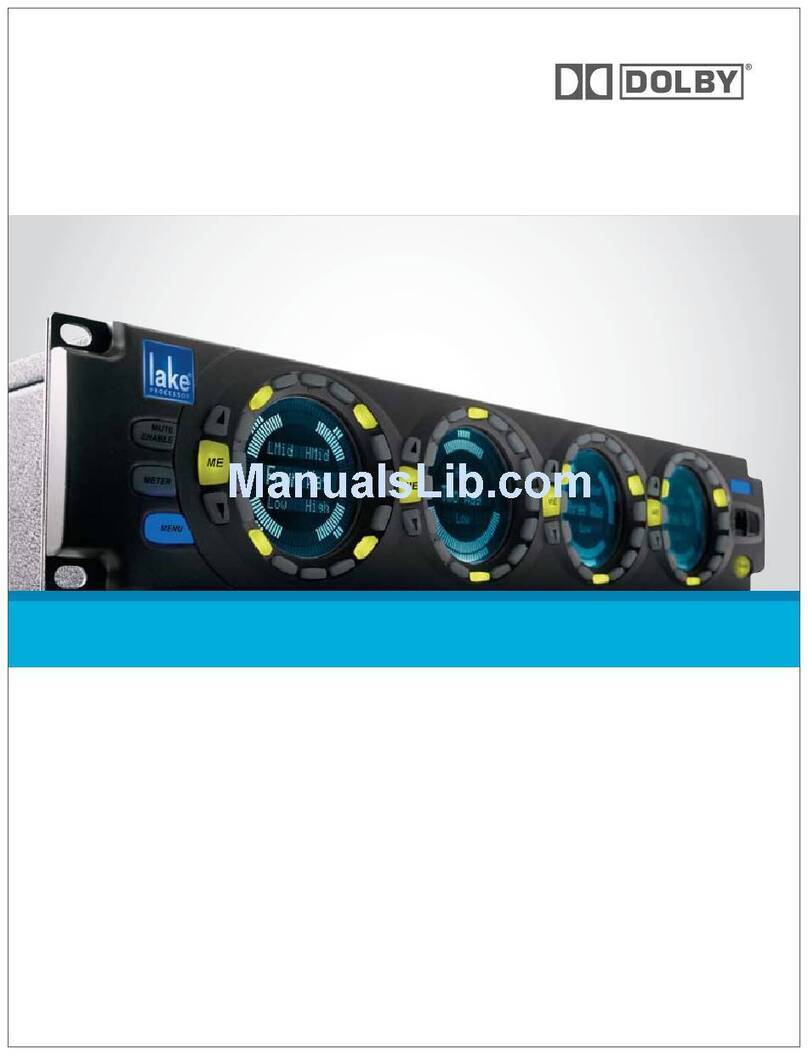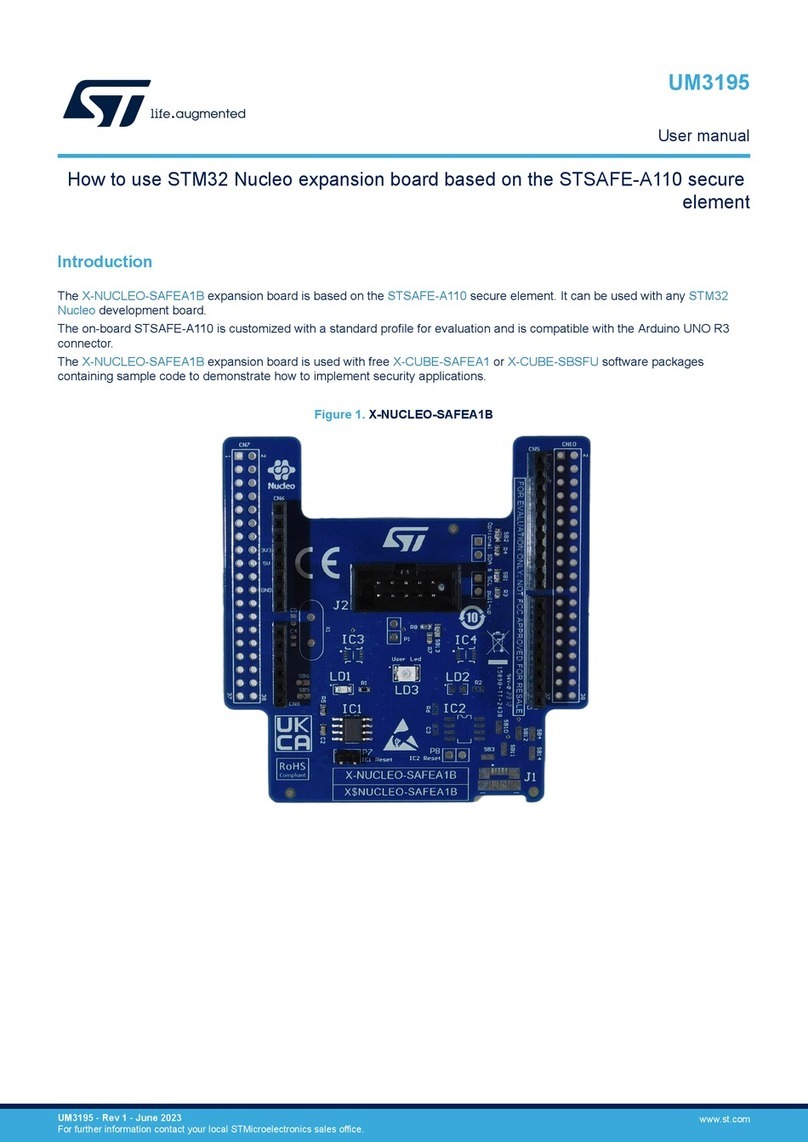
TABLE OF CONTENTS
SECTION 1 INTRODUCTION
1.1 About the Dolby CP500 ......................................................................1-1
1.2 Hardware Configurations Available....................................................1-1
CP500-D........................................................................................1-1
CP500-300.....................................................................................1-1
CP500-SR......................................................................................1-2
CP500-70.......................................................................................1-2
1.3 About This Manual..............................................................................1-2
1.4 Specifications ......................................................................................1-3
1.5 Regulatory Notices ..............................................................................1-5
FCC ...............................................................................................1-5
UL..................................................................................................1-5
UK .................................................................................................1-5
IEC.................................................................................................1-5
SECTION 2 EQUIPMENT REQUIRED
SECTION 3 INSTALLATION AND JUMPERS
3.1 Replacing an Existing Sound System..................................................3-1
3.1.1 Before playing the film:........................................................3-1
3.1.2 While playing the film:.........................................................3-1
3.1.3 Disconnect the old system....................................................3-1
3.2 Mount the CP500.................................................................................3-2
3.3 Connect the CP500..............................................................................3-2
3.3.1 Connect Motor Start Relays ................................................3-3
3.3.2 Connect Remote Controls ...................................................3-3
3.3.3 Connection of Solar Cell Boards.........................................3-4
3.4 Check and Set Jumpers........................................................................3-6
Cat. No. 661 Optical Pre-amplifier Card (Analog
Soundtracks)......................................................................3-6
Cat. No. 681 Analog Switch Card.....................................3-6
Cat. No. 682 Analog Output Card.....................................3-7
Cat. No. 683 Crossover Card (Optional)...........................3-8
3.5 Install Circuit Cards - Card Descriptions ..........................................3-10
Model CP500-D ..........................................................................3-10
Cat. No. 222SR/A Module..............................................3-10
Cat. No. 661 Optical Preamplifier Card..........................3-10
Cat. No. 681 Input Switch Card ......................................3-10
Cat. No. 675A Digital Signal Processing Cards (2)........3-10
Cat. No. 685 6-Channel Analog to Digital Converter
Card .................................................................................3-10
Cat. No. 662 6-Channel Digital to Analog Converter
and Voltage Controlled Amplifier Card..........................3-10
Cat. No. 682 Analog Output Card...................................3-10
Cat. No. 684 System Controller Card..............................3-10
Cat. No. 683 Crossover Card (Optional).........................3-11

